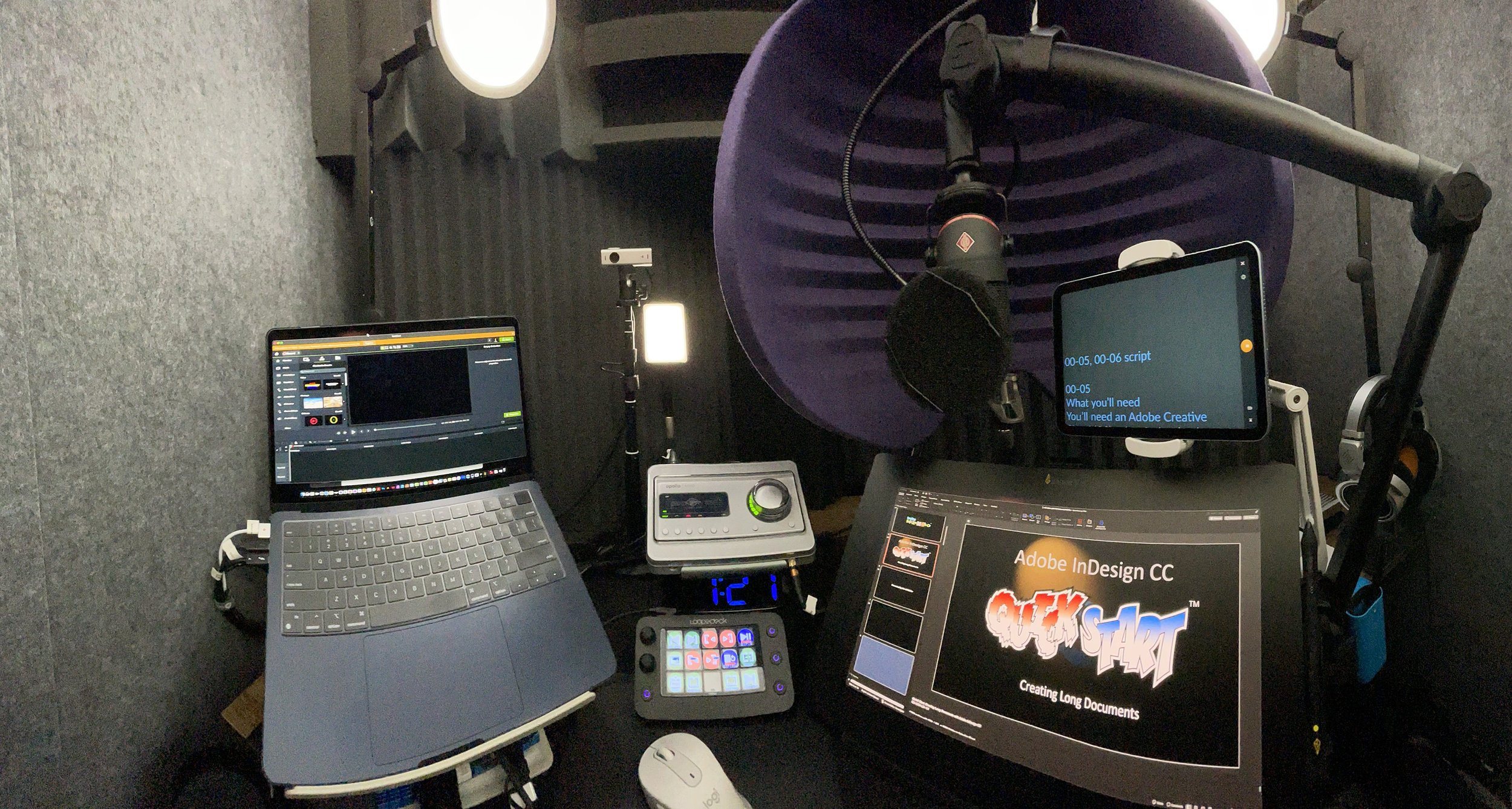
Recording Studio
A highly-efficient set of techniques have been set up after some time spent learning how to record professional tutorials and courseware. For webcasts and recordings, an unused storage room has been set up with a table, thick carpet, no-fan computers, high-quality mics, and sound-insulated panels (around and above). This sound proofing/deadening investment avoids ramping up and never-ending HVAC, chorus of crickets (yes, those pesky insects), phone rings, the distant hum of traffic, and even trains.
Tutorial recording on any platform
-

Windows is still the leading platform
Presentations and app demos are recorded on an external display. A Microsoft Studio professional laptop, iPad, mic and audio interface, and beefed-up sound isolation booth does the trick. Recordings are made on the latest Windows 11.
-

But macOS makes recording easy
Looking down at the same recording area, switching out platforms from Windows to macOS is simple. And with an Apple Silicon MacBook, there is never fan noise interference. LED photography ring lights produces enough light for webcasts. Recordings support macOS Ventura (or later).
Quality voiceovers require quality equipment
USB mics work fine but they don’t come close to an XLR with a high-speed Thunderbolt-powered audio interface (UAD). After trying out a wide assortment of microphones and headsets, I have settled on German audio device manufacturers (BeyerDynamic and Neumann). The wire mesh pop filter from Sweden (Hagan P110) is a work of art for keeping plosives under control. And the UK-based Aston Halo sound isolation contraption and other sound-deadening panels gives it that LinkedIn Learning (Lynda.com) professional audio quality.
Recordings are make on a secondary display monitor (a Wacom pen display for graphics and publishing tutorials). Reading from a script is voice-activated with an amazing teleprompter iPad app (SmartPrompt Pro) mounted on a “killer” Twelve South and Native Union adjustable stands.
Reusing video components
The secret to producing killer video-based tutorials and courseware is in the upfront planning. Using the best video recording/editing software around (TechSmith Camtasia), starter recordings are set up as templates and common elements (lower thirds, watermarks, intros, and outros) are shared in libraries.
Find out more about our courseware development:

